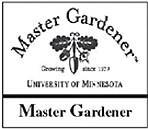July 29, 2004 at 1:58 p.m.
Disease control is an important part of growing tomatoes successfully. It begins with planning and continues through harvest. Always choose disease resistant tomato varieties. Plant disease-free transplants and provide adequate space between plants for good air circulation. After planting, monitor your plants continuously for early symptoms of disease.
Tomato diseases are like other diseases in that the only way you can tell what the problem is by observing when it strikes and what part of the plant it attacks first.
Septoria leaf spot is probably the most common disease of tomatoes. It begins to infect lower, older leaves about the time fruits set. Newly infected leaves develop small brown spots of dead tissue. These spots often have light tan centers and dark margins. Often small, black, pinhead like structures develop with the lesions. These reproductive structures, only visible with a hand lens, contain spots that are splashed by rain or overhead irrigation to healthy leaves. As the disease progresses upward, infected leaves turn yellow to brown. Severely infected leaves eventually fall from the plant, exposing developing fruits to excessive sunlight.
To manage septoria leaf spot, keep tomato plants staked or caged so foliage is off the ground. Water early in the day at ground level. Mulch beneath plants to prevent spores from splashing upwards, and plant resistant varieties when possible. To minimize new infections, remove and destroy spotted leaves as soon as they appear. If infection is severe, fungicides may be required. Many preventative fungicides are labeled for home use but be sure it states that it controls septoria leaf spot.
Verticillium and fusarium wilt are common wide-spread soil borne fungal diseases. Fusarium wilt is most common in warm climates and sandy soil. This yellowing and wilting of the foliage, starting at the bottom of the plant and progressing upward. Yellowed leaves wilt noticeably before they die. The best control is to pull and destroy plants. If there is fruit on the plant, it can be eaten although affected fruit may not be as tasty.
One of the main differences with verticillium wilt is that the leaves turn yellow and dry without any evidence of wilting beforehand. Another big difference is that it is more common in cool climates and it also affects potatoes, eggplants, peppers, strawberries and raspberries. The best control is to pull and destroy affected plants.
Another fungal disease for tomatoes is early blight. It is recognized by target-like, irregular brown spots that appear on leaves. The spots can enlarge and grow together as the infected leaves turn yellow and either droop or fall from the plant. One difference from other fungal diseases is that it can also attack stems, forming and firdling cankers that can kill the plant. It will also attack the fruit causing dark, sunken, velvety spots. There are preventative fungicides that will help control many of these diseases. Be sure it states on the label that it controls these diseases and carefully follow the directions.
+++++
Upcoming Plant Clinics
I know that many of you have wondered if we would be doing plant clinics anymore. Well, they are back and there are now three ways to get a plant or insect sample to the Master Gardeners!
We have set up three drop-off sites in the county: Mannions Greenhouse and Floral in Rush City, North Branch Floral and Federated Coop (Cenex) on Highway 8 in Chisago City. There will not be a Master Gardener on site, but these businesses have agreed to hold the samples for pickup.
Starting the week after the Chisago County fair, we will be holding plant clinics every Thursday night from 6-8 p.m. at the Chisago County Hazardous Waste facility in North Branch. There will be Master Gardeners on site to answer your questions.
The Lindstrom Farmers’ Market is now open. There is a Master Gardener there from 8 a.m.-noon every Saturday.
+++++
Ways to access
information
www.extension.umn.edu/county/chisago Check out the “Hot Topics” box in the middle of the page for current Chisago County Master Gardener news and events.
You can also click on “Ask a Master Gardener” next to the cute little flower on the right hand side of the page. Here you can search 1000’s of answers from Master Gardeners around the state. If you don’t find your answer you can submit a question online or search for University publications, Bell Museum of Natural History. For information about snakes, skunks, raccoons or other wildlife around your yard, call the wildlife information line at (612) 624-1374 or www.bellmuseum.org.



Comments:
Commenting has been disabled for this item.